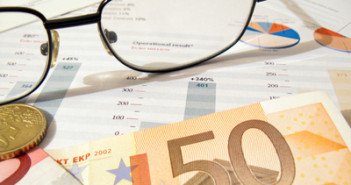The results of the European Central Bank’s bank stress tests are in, and investors are heaving a sigh of relief. In line with expectations, none of Europe’s largest banks were found lacking, and no French, German or Spanish institutions were told to raise more capital. Twenty-five smaller regional institutions failed the asset quality test performed at the end of last year – but almost 75% of the shortfall has been raised in the period since, bolstering confidence that the sector is positioned to withstand turmoil.
That being said, the reality is that many of the economic zone’s biggest banks only barely cleared the hurdle. Balance sheets are still incredibly fragile, weighed down with non-performing and poor-quality assets – and this is far more important in the euro area than in countries like the United States. Because credit markets are dominated by sovereign funding vehicles, and commercial lending is overwhelmingly done by banks, the flow of money remains tightly restricted – meaning that loosening monetary policy is having little effect on the real economy.
The euro is trading modestly higher, bolstered by an overall improvement in risk sentiment, but held back by another decline in German commercial confidence. The Ifo business climate index hit a two-year low in early October, compounding concerns that Europe’s largest economy will lead the continent into a weak fourth quarter.
Globally however, markets are poised to start the week on a more relaxing note, with most majors settling into the ranges that were established in the tumult earlier in the month. The dollar continues to benefit from strong tailwinds, with rising employment numbers, improving commercial lending, and commodity price deflation combining to support growth expectations. With the Federal Reserve expected to end its bond buying programme this Wednesday, monetary dilution has given way to tightening in driving the currency forward.
The Canadian dollar remains incredibly well-contained, with bulls fenced in by flat crude prices, while the bears are tethered by expectations of rising export growth as the US economy rebounds. Traders are positioned for a slight decline from 2.5% annualized, to 2.4% when the August gross domestic product number is released on Friday, leaving little in the way of obvious volatility catalysts this week. In other words, it’s quiet…too quiet….
Noise is coming from the emerging markets however, where the Brazilian real is the latest victim of an extreme selloff. After President Dilma Rousseff saw off her business-friendly challenger in a weekend election, the exchange rate fell to a nine-year low. Rousseff’s deeply interventionist government is seen as ill-equipped to deal with the consequences of a decade-long binge on foreign capital, with global investors increasingly skeptical of the country’s ability to grow its way out of trouble.
We’re depressingly reminded of French President Charles de Gaulle’s warning – “Brazil is the country of the future…and always will beâ€. But there is cause for optimism – once the saccharine sugar boost provided by international investors has worn off, growth should be far more balanced and sustainable.
Further reading:
Canadian dollar remains incredibly well-contained
US pending home sales +0.3%



